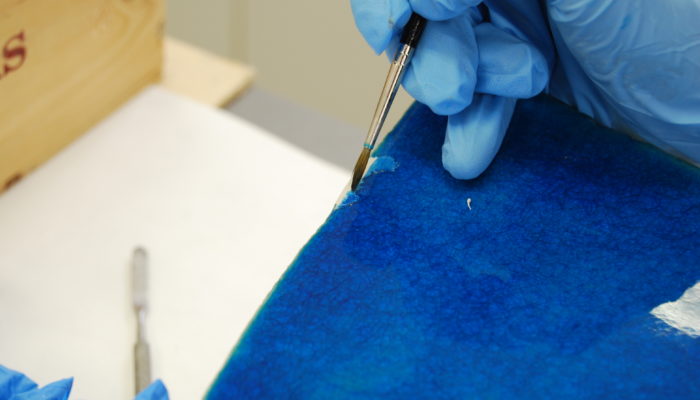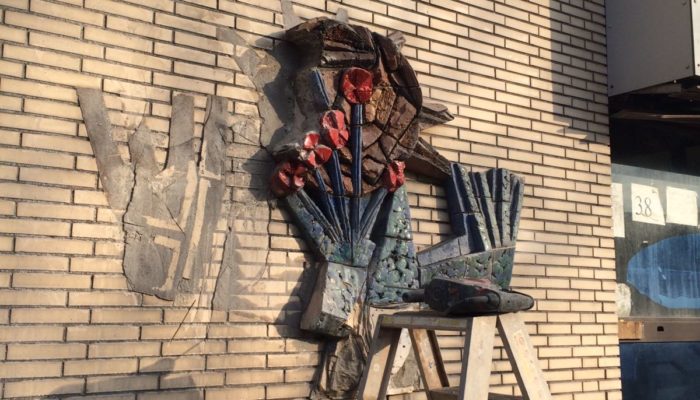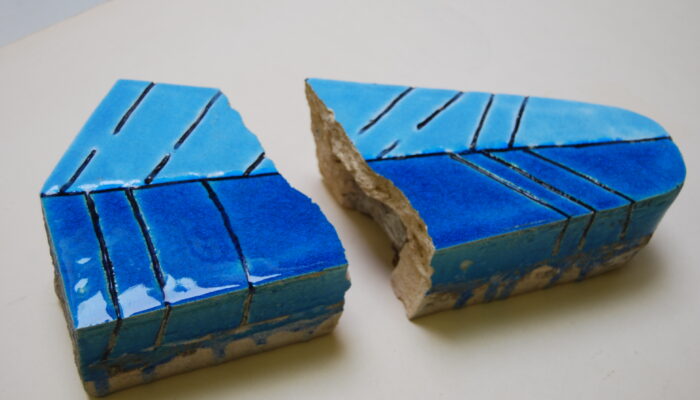Art Conservation has the expertise in the conservation and restoration of your ceramic objects. Ceramics is a collective name for objects in baked clay and can be divided into 3 categories: pottery, stoneware and porcelain. We conserve various ceramic materials such as faience, majolica, terracotta, porcelain, archaeological ceramics, tiles, building ceramics, and so on. You have also come to the right place for related materials such as glass and mosaics. We work both in situ (think of building ceramics) and in the studio (decorative ceramics such as vases, crockery, sculptures or tile tableaux).
We offer the following services:
Advice | Research | Documentation | Conservation-Restoration | Treatments | Preservation | Reconstructions and Replicas | Installation | Art Handling | Condition reports and survey
Advice
Ceramics are most susceptible to damage during transport and handling. So every action must be thought through. Archaeological finds should be treated differently from objects that do not come from an archaeological environment. In a museum context, many problems with ceramic objects can be avoided by a correct approach to manipulation and storage. Art Conservation offers advice on proper storage, transport and presentation of these objects.
Research
Before conservation and/or restoration takes place, a preliminary investigation is carried out. This consists of the description of the various materials, the storage condition, the identification of the damage, its nature and scope, the evaluation of the causes of degradation, the description of the nature and the scope of the necessary treatment. In addition to the usual visual analysis, other research techniques can also be discussed, such as:
- Ultraviolet Fluorescence :
An important part of an optical examination is the use of a UV lamp. Old restoration treatments, such as glues, additions or retouches, become visible by means of ultraviolet light. This research contributes to the choice of whether or not to remove old restorations. - Microscopy:
The surface structure of the material can be studied with a light microscope. Micro cracks, scratches or other remarkable features can be visualized. - Salt research (quantitative analysis) :
The amount of salts in a ceramic object can be determined using a conductivity meter. Salts can damage the object and lead to instability of the internal structure or damage to the enamel. When there appears to be a great risk, a choice can be made to the object desalt.
Preservation
Preventive conservation includes all measures that are taken to protect your ceramics from further deterioration or loss, without handling the objects. This may include measures concerning registration, storage, handling, packaging, transport, securing collections, disaster planning, exhibiting, and so on. Our sister company Art Salvage specializes in this.
When there is a minimal treatment appears necessary to prevent further damage or decay, we refer to active preventive conservation . The most common treatments are the desalination of porous ceramic material and the consolidation of cracks.
Art Conservation has the space, materials and professional conservators to preserve your ceramics as well as possible.
Conservation- Restoration
When more thorough treatment appears to be necessary to remove the to promote readability of the object , we move to one conservation . The procedure is always reversible.
You can contact us for a variety of treatments:
Cleaning | Remove old restorations such as overpainting, glueing and retouching | Bonding scratches or cracks | Gluing shards | Gaps filling and retouching | Stabilizing a ceramic object on another carrier
Documentation is very important. After the treatment, a final report is drawn up in which all examinations and treatments are described in detail and documented using photos. This offers the customer insight into the conservation process. Openness about our activities is an important pillar within our company.
Code of Ethics: Art Conservation carries out all work according to the ethical guidelines for conservation and restoration of the cultural heritage of the European Confederation of Conservators-Restorers’ Organizations (E.C.C.O.).
For all your questions about ceramic restoration, you can contact us, so that we can explore the possibilities together.




